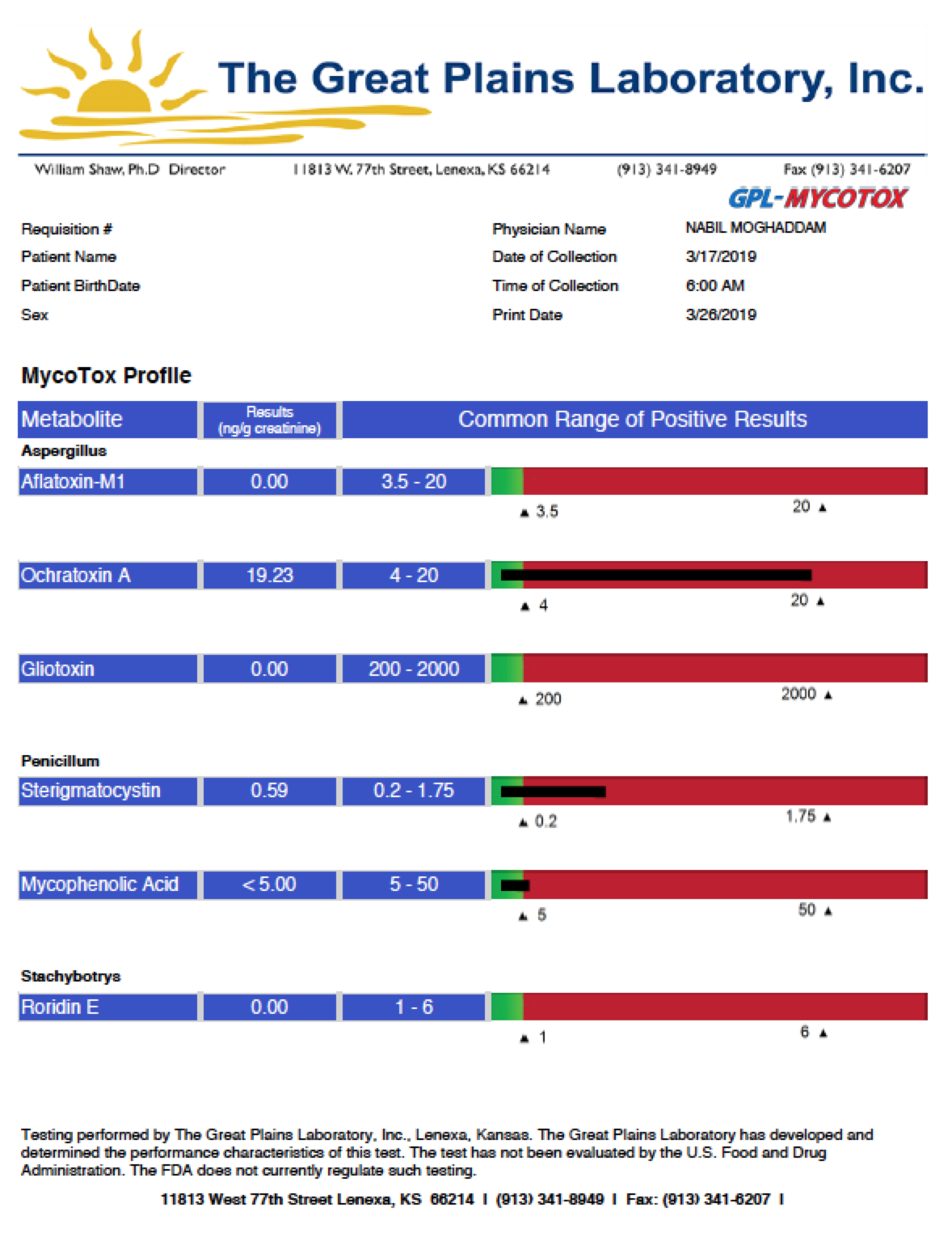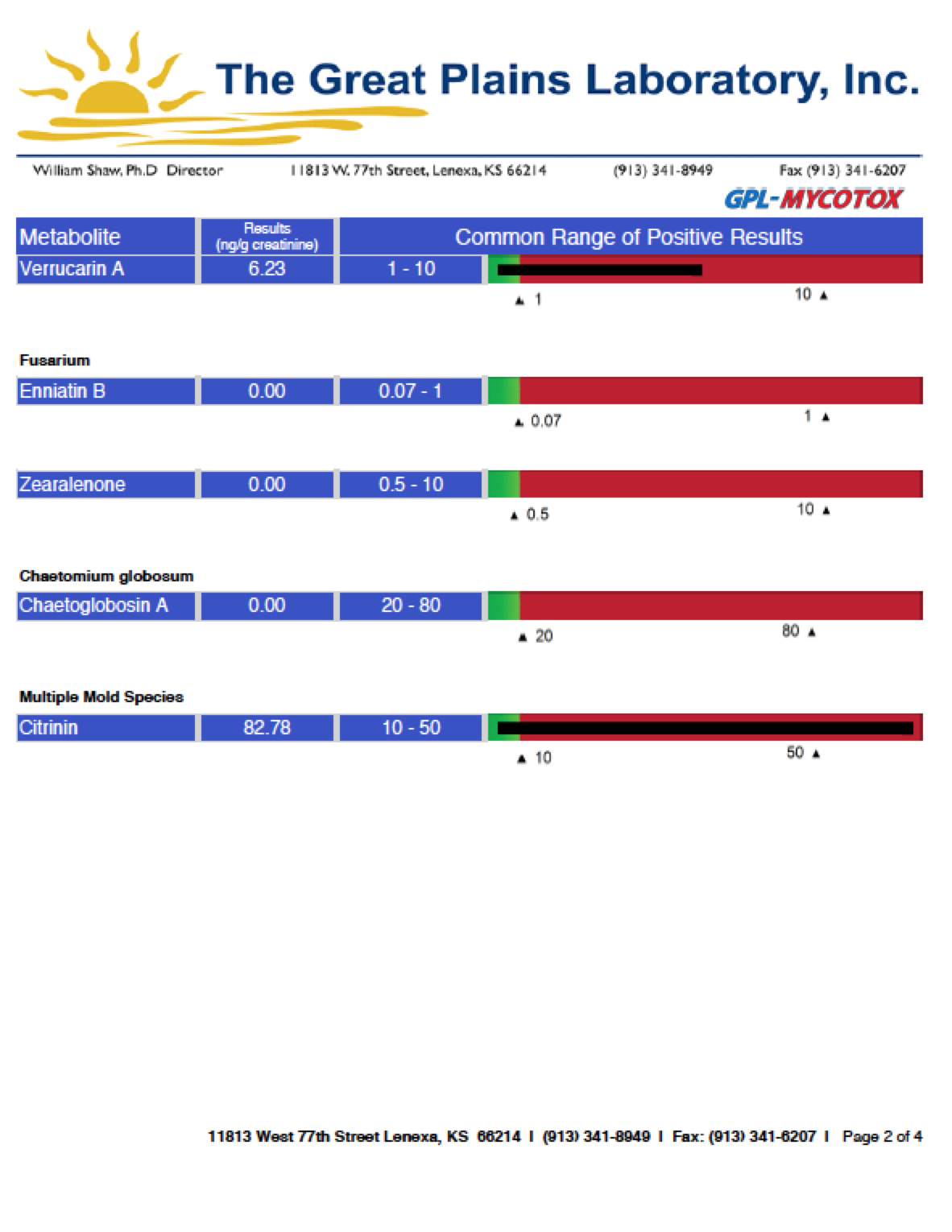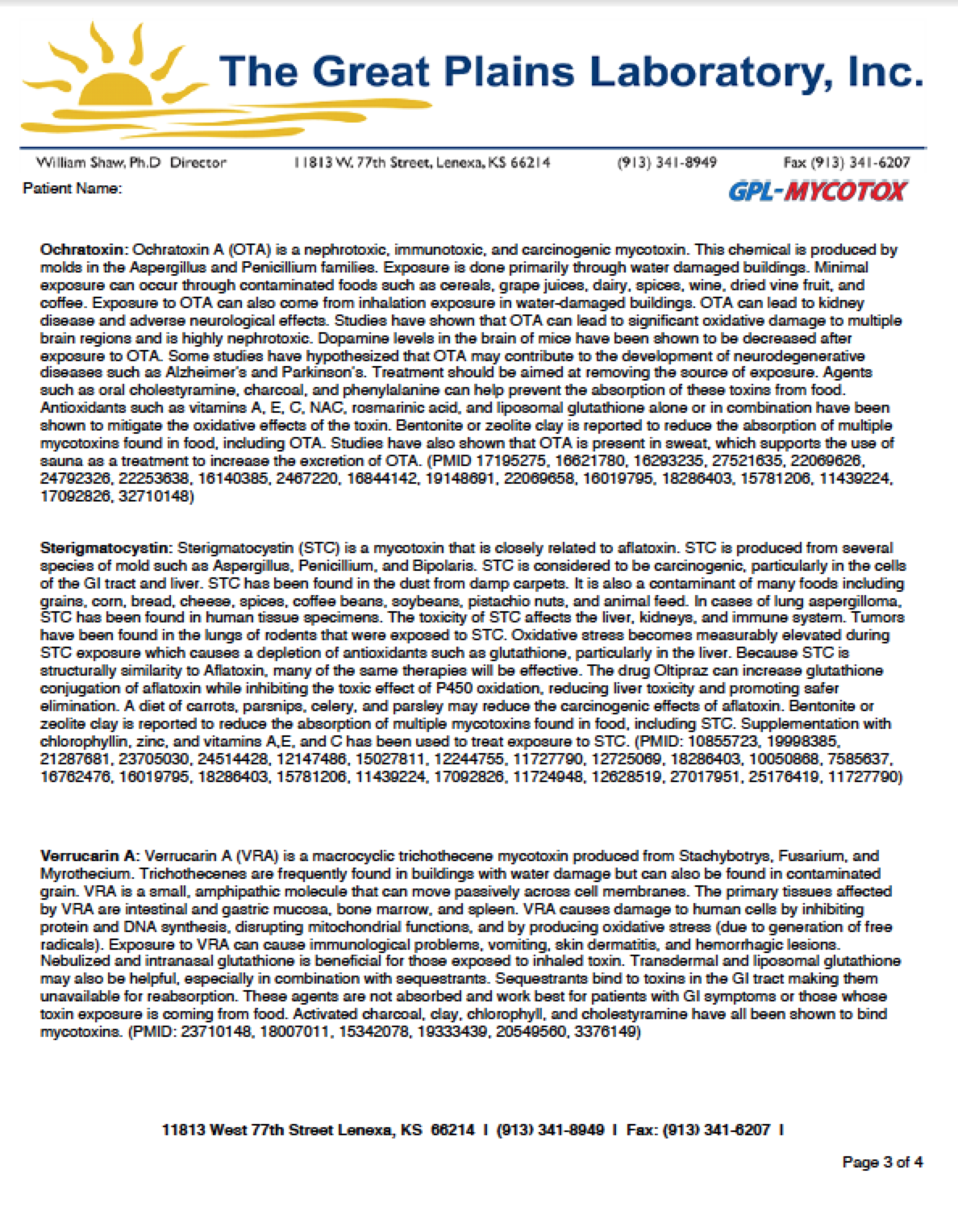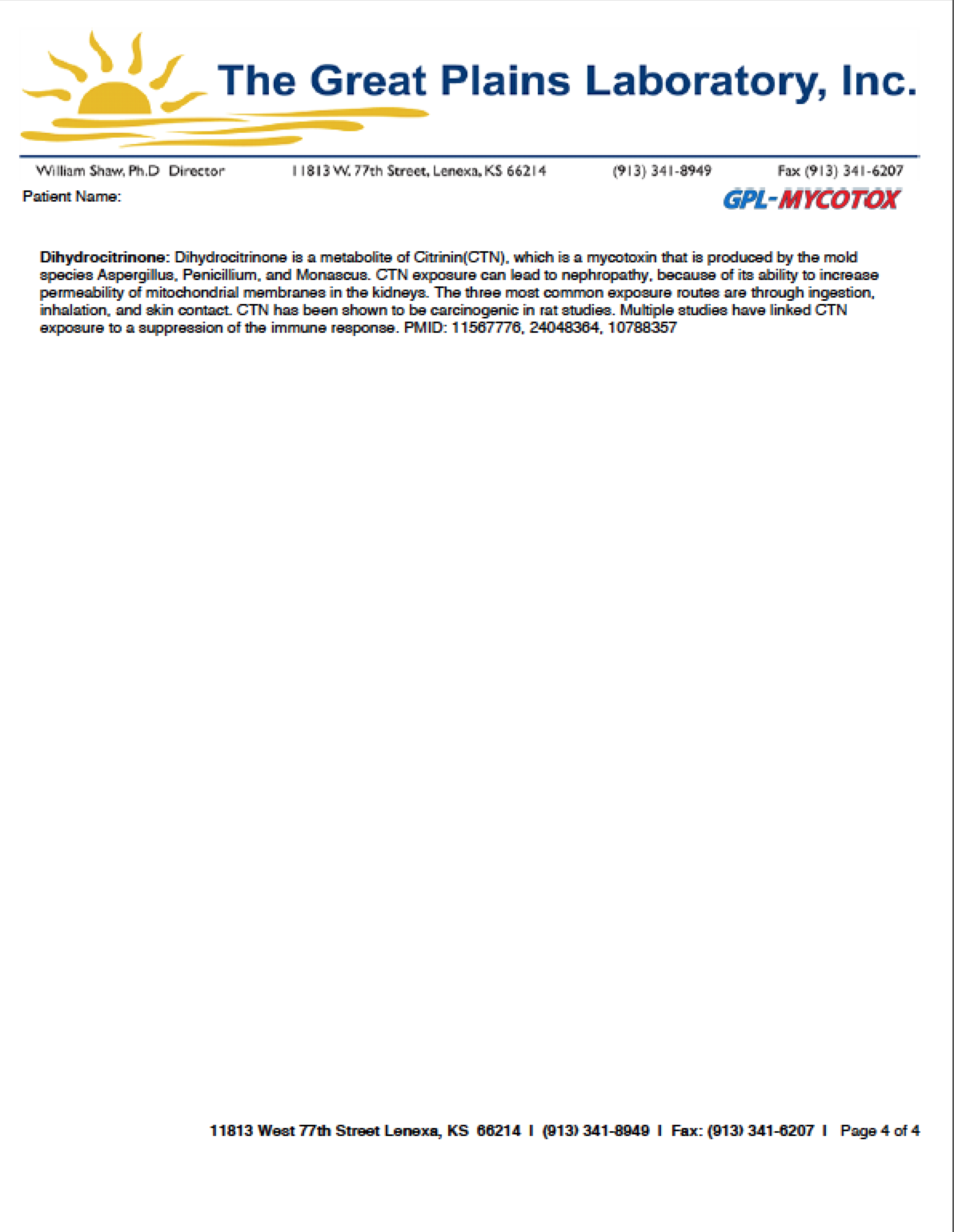Urine Mycotoxin Testing for Mold Exposure (GPL)
Mycotoxins are some of the most prevalent toxins in the environment. Mycotoxins are metabolites produced by fungi like mold, which can infest buildings, vehicles, and foodstuffs. A majority of mycotoxin exposures are through food ingestion or airborne exposure. In the European Union, 20% of all grains harvested have been found to be contaminated with mycotoxins. Unfortunately, mycotoxins are resistant to heat and many processing procedures.
Fungi are able to grow on almost any surface, especially if the environment is warm and wet. Inner wall materials of buildings, wall paper, fiberglass insulation, ceiling tiles, and gypsum support are all good surfaces for fungi to colonize. These fungi then release mycotoxins into the environment causing symptoms of many different chronic diseases. Diseases and symptoms linked to mycotoxin exposure include fever, pneumonia-like symptoms, heart disease, rheumatic disease, asthma, sinusitis, cancer, memory loss, vision loss, chronic fatigue, skin rashes, depression, ADHD, anxiety, and liver damage. With our new MycoTOX Profile, we can identify mycotoxin exposures and make recommendations for detoxification treatments that have been effective.
GENERA OF MOLD TESTED
ASPERGILLUS
Aspergillus is the most prevalent mold group in the environment. It has caused billions of dollars of in damage to crops and livestock. Two of the most common Aspergillus mycotoxins are aflatoxin and ochratoxin. The main target of these toxins is the liver. These toxins have been found in all major cereal crops including peanuts, corn, cotton, millet, rice, sorghum, sunflower seeds, wheat, and a variety of spices. Theyare also found in eggs, milk, and meat from animals fed contaminated grains. Diseases caused by Aspergillus are called aspergillosis. The most common route of infection is through the respiratory system. Aspergillus can cause severe asthma when the mold colonizes the lung, forming a granulomatous disease.
PENICILLUM
There are over 200 species of Penicillium that have been discovered. Penicillium chrysogenum is the most common of these species. It is often found in indoor environments and is responsible for many allergic reactions. Penicillium is also a known contaminant in many different food items. Many different types of citrus fruits can become contaminated with Penicillium, but it can also contaminate seeds and grains. One reason that Penicillium is such a common infestation is because of its ability to thrive in low humidity. In the home, Penicillium can be found in wallpaper, carpet, furniture, and fiberglass insulation. The most common mycotoxin produced by Penicillium is ochratoxin (OTA). Ochratoxin is nephrotoxic, which means that it damages the kidneys. It is also carcinogenic.
STACHYBOTRYS
Stachybotrys is a greenish-black mold. This mold can grow on materials with high cellulose and low nitrogen content such as gypsum board, paper, fiberboard, and ceiling tiles. Stachybotrys is known for its production of the highly toxic macrocyclic trichothecene mycotoxins. Two of the more common mycotoxins produced by Stachybotrys are roridin E and verrucarin. In addition to these mycotoxins, the fungus produces nine phenylspirodrimanes, as well as cyclosporine, which are potent immunosuppressors. These immunosupressors along with the mycotoxin trichothecenes may be responsible for the high toxicity of Stachybotrys.
FUSARIUM
Fusarium’s major mycotoxins are zearalenone (ZEN) and fumonisin. Fusarium fungi grow best in temperate climate conditions. They require lower temperatures for growth than Aspergillus. Fusarium grows worldwide on many different types of grains including corn and wheat. Exposure to mycotoxins from Fusarium can lead to both acute and chronic effects. These symptoms can include abdominal distress, malaise, diarrhea, emesis, and death. ZEN possesses estrogenic effects and has been implicated in reproductive disorders.





